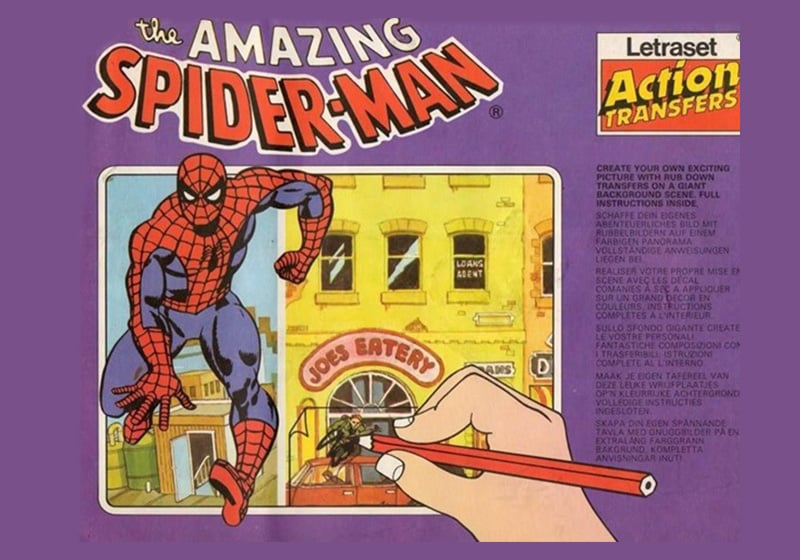Table of Contents
We often completely forget about objects that have accompanied us through hours and hours of our lives – especially items from childhood. But occasionally something reminds us of them, bringing early memories flooding back…
Today we’re going to try and bring some of these memories back to those of you who were children between the end of the seventies and the beginning of the nineties. Ready? Do you remember Action Transfers?
Action Transfers were a sort of coloured sticker that might feature fantasy creatures, historical figures, pirates, monsters, Roman soldiers, plants, animals, Disney characters, footballers, dinosaurs, cars, planes – in fact, anything and everything!

Kids could print – or “transfer” – these figures onto pre-printed backgrounds, on to a piece of paper or even their own skin by rubbing them with a pencil or a ruler. In doing so, children used a system similar to printing to create their own stories and images, letting their imagination run riot.
Ring a bell?
Where did Action Transfers come from?
Action Transfers first appeared at the end of the seventies and quickly achieved cult status among children. By the beginning of the eighties, there was barely a kid who hadn’t used or seen one.


Action Transfers were actually invented in the sixties and used a technology that was revolutionary at the time: instant lettering, also known as dry transfer lettering [we tell the story of this invention here].
Patented by British company Letraset, for the first time, this simple solution enabled anybody to quickly and cheaply create posters, fanzines and the like at home. It was revolutionary at a time when only publishers and printers could afford the huge investments required to purchase and operate printing presses.
But with instant lettering, rudimentary desktop publishing was now easily affordable by anybody and everybody – decades before the advent of the personal computer and the first graphic design software.
A technology with unexpected consequences
Dry transfers worked like this: by applying the sheet to another surface and rubbing it, the letter or image was printed – or more accurately – transferred to that surface. Letraset sheets were made of a temperature-sensitive material and letters were printed with special inks. Rubbing would increase the temperature and enable the character to be transferred to another surface. The result looked very similar to conventional printing.
In 1964, a few years after their first patent, Letraset hit on the idea of producing transfers for children. Action Transfers were born!

The background scenes produced for Action Transfers let kids’ imaginations run riot.
They included everything from medieval sieges to pirate ships, from scenes from Westerns to ancient battles. History series taught children about the past while immersing them in exotic and exciting worlds: there were Action Transfers dedicated to events as diverse as the discovery of America and the Normandy landings. There were series dedicated to dinosaurs, the deep sea and space exploration, not to mention sport – from motocross to football –, fairy tales like Little Red Riding Hood and action adventures like Zorro or Robin Hood.
And now?
Between the late eighties and early nineties, Action Transfers disappeared.
Their demise lay in the growing popularity of other forms of entertainment for kids, especially videogames. Looking back today, instant lettering seems like the point where traditional moveable type printing met the first personal computers: it was the first solution that let anyone print something at home.

Today, Instant Transfers are collector’s items. But there are some who are keen to preserve the memory of this hobby so fondly recalled by an entire generation. In Britain, there is an organisation called SPLAT, the Society for the Preservation of Letraset Action Transfers, which aims to document and preserve the history of Action Transfers. You never knows perhaps this vintage technology will come back into fashion one day.
Did you play with Action Transfers? Would you be delighted to find an old box of them in the attic?

